Martin Brudnizki on designing the most stylish members clubs
"It's sort of like town planning!" says the maximalist master designer.
Welcome to Second Story, a newsletter for lovers of old houses and, this week, members clubs! If you don’t subscribe, please sign up below. And if you like what you read, I’d be so appreciative if you hit the heart button at the bottom of the screen to boost this post!
I have loved Martin Brudnizki’s style since I first saw his maximalist transformation of Annabel’s back in 2018—with custom de Gournay wallpaper, vibrantly upholstered furniture, and theatrical bathrooms. It was just icing that the reinvented 18th-century townhouse, Grade-I listed, no less, is home to one of the buzziest London clubs1.
In the years since, Martin has left his mark on both sides of the Atlantic decorating restaurants like Café Carmellini in NYC, Scott’s in London, and hotels like the trendy Fifth Avenue Hotel and The Beekman—among many others. But aside from hot eateries, hotels, and some very stylish homes (Martin’s own home outside London is on the market, btw!), I have found myself most interested in how he designs members clubs, which blur the line between hospitality and home.
Aside from Annabel’s, he has outfitted multiple locations of Soho House, the glamorous Apollo’s Muse in London, the Ivy Club, The Academician’s Room, and many others. I sat down with the AD100 and Elle Decor A-list designer to hear more about how he designs for these exclusive spaces—and what makes them different from any other commission.
When did you start designing for clubs?
Clubs are an integral part of London’s social life, and when I moved to London in the early 1990s, you had the Groucho Club for media and music, and then you had the grand old clubs set up for the aristocracy. It was only later that the landscape started to change with more modern clubs like Soho House.
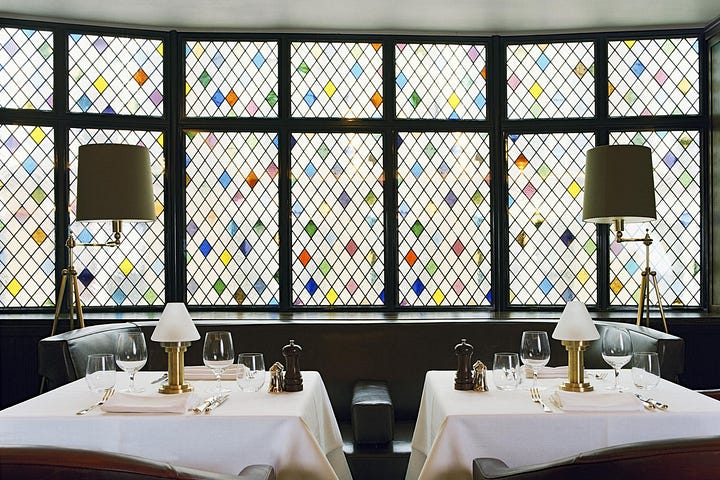

About eight years after I started my firm MBDS in 2000, I was approached to design a club for the Ivy restaurant in London2. The Ivy restaurant in London is iconic, and they hadn’t done a club concept before, so we were all exploring what it meant to really have a club. It was such an exciting opportunity.

What did you learn? What does designing a club mean?
I think a lot of people in America are very keen on opening clubs, without necessarily understanding what a club is! A club is not a glorified restaurant with a membership, but rather a microcosm of a community, where like-minded people with common interests gather. There needs to be a unifying factor for the members.
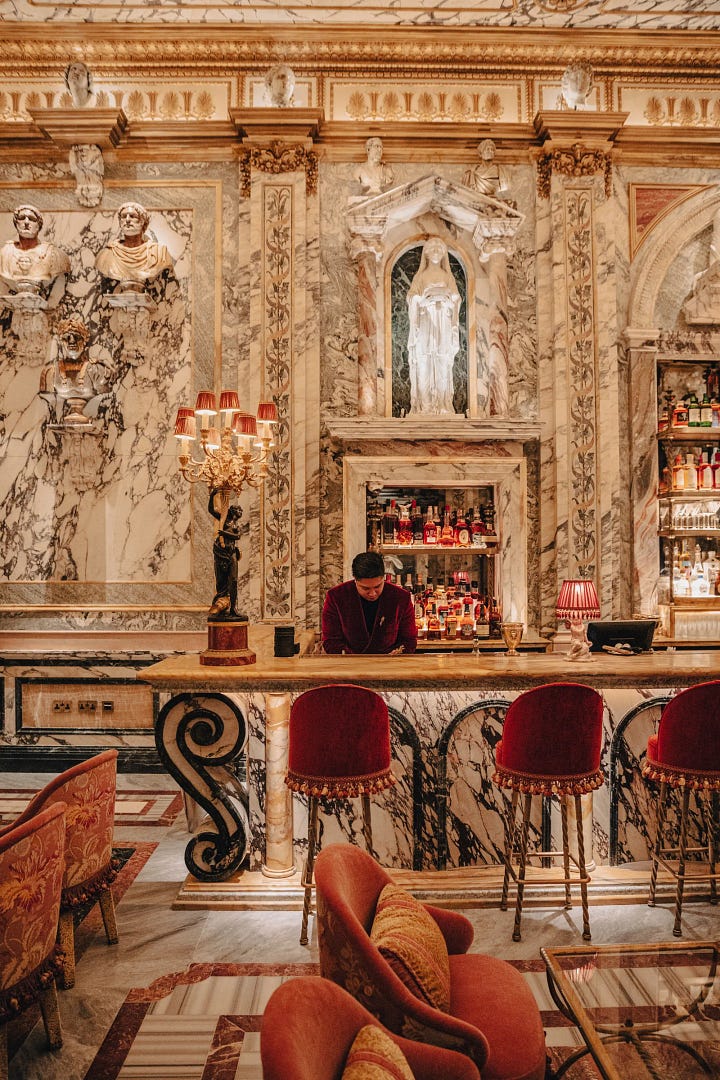

Aside from a dining and drinking component, there must be rooms or spaces for general use, programs, and activities for the club to build community. As a member, you could really spend a lot of time in the clubhouse and use it as an extension of your home, in a way. Many clubhouses take that as a cue to look very residential in their design, whereas I focus a bit more on playfulness and fantasy. What we try to do is create something classic that does not need to be redesigned quickly after its initial installation and opening. Of course, you could update something and maybe reupholster, but you don’t really need to fundamentally change anything. That’s the point of the work we do.
How do you bring playfulness into your design?
We start by creating narrative or story—which we synthesize after gathering a lot of information about not only our client but also the location of the club. We want to know what the club is looking to do with their clubhouse. Is there a sort of special, stylistic interest? Where the club will be? Is it a new building or is it historic?


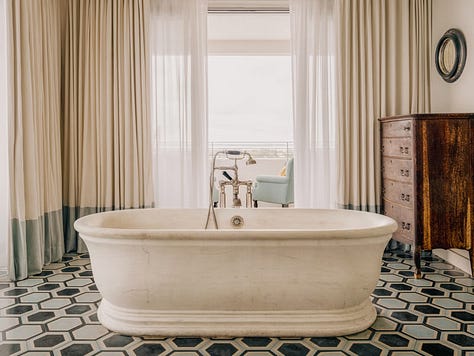
If it’s a new building, then what building was there before? Or are there any interesting histories from the neighborhood and the street? From there, we’ll look at the wider neighborhood, city, and even the country.
If we’re working on a building on Bond Street in New York, for instance, and we find out a poet used to live there, we may let the poetry inspire the interior design and celebrate that. That would make it very place-specific, which we’d complement with other references from New York, perhaps when McKim, Mead, & White were designing and going to Paris to buy whole rooms, ship them back to New York and install them in mansions during the Gilded Age—like our favorite TV show, soon coming back to haunt us!
What are some of the challenges you face when designing a club?
I’m doing a very big club right now in the very early stages—it’s probably 4 or 5 years away from completion—and we’re constantly thinking how do you move through the club. How can you ensure that you not only understand the club but also enjoy every part of it?
There’s a lot of psychology behind it. You need to be clever and guide people through the building to look at certain areas and then they can understand the purpose of that room and make choices about where they want to go next.
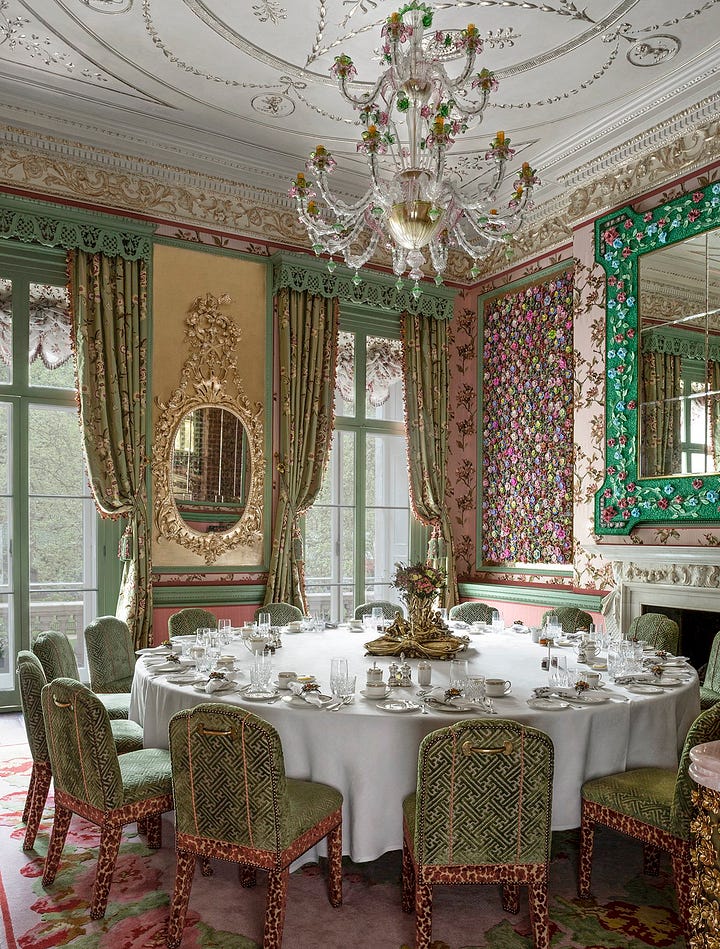

In a hotel, for instance, the structure and expectation much more formulaic. You know what you’re getting: Entrance, lobby, lobby bar, lift, a series of bedrooms, and maybe a rooftop lounge or restaurant. Each clubhouse can be different with its own goals and personalities to reflect the organization. A clubhouse might have a bunch of different components, like a restaurant, spa, even a night club, and they all need to be made apparent to the member or guest who is enjoying them. It’s almost like town planning! You need to think about where the center is and all the roads that lead away from it.
And then, when you translate a club from one country to another, you need to understand the culture of the place where it’s going to be. You’ll of course keep the main identity of the club, but it needs to bend a bit to the new city you’re now in.
What’s a club design you’re most proud of?
Oh, absolutely Annabel’s in London—that was such a fantastical project! But that was exactly what the client wanted—a fabulous journey. People still mention it to us today. It’s great fun!
A FEW MORE THINGS
What I’m reading next: With a Vengeance, a thriller by Riley Sager. I love nothing more than a thriller, and he’s one of my favorite writers. Hs thrillers are often set in or around big old houses, and this one takes place on an old timey train. Count me in!
Is anyone else obsessed with Amy Poehler’s podcast Good Hang? It’s the perfect companion for our 4.5 hr car rides (actually, yesterday’s ride was 6 hours, thanks West Side Highway traffic) from NYC to the Finger Lakes.
We’ve been watching the new season of Poker Face, which has been okay! Honestly, season 1 was stronger, but if you’re looking for something fun and campy with a murder mystery bent, give it a go.
Here’s a cool and well preserved mid-1700s Connecticut colonial for sale for $1.2M. That keeping room with the gigantic fireplace is especially impressive.
Don’t be fooled by the abundance of tomato memes on Instagram. I checked with John, and he said that tomato season is still about a month away. I asked if he had a more specific time in mind for the start of tomato season, and he said that “he is not a farmer.”
I love a club.
Martin has since also designed the Ivy Restaurant, which does not require a membership.






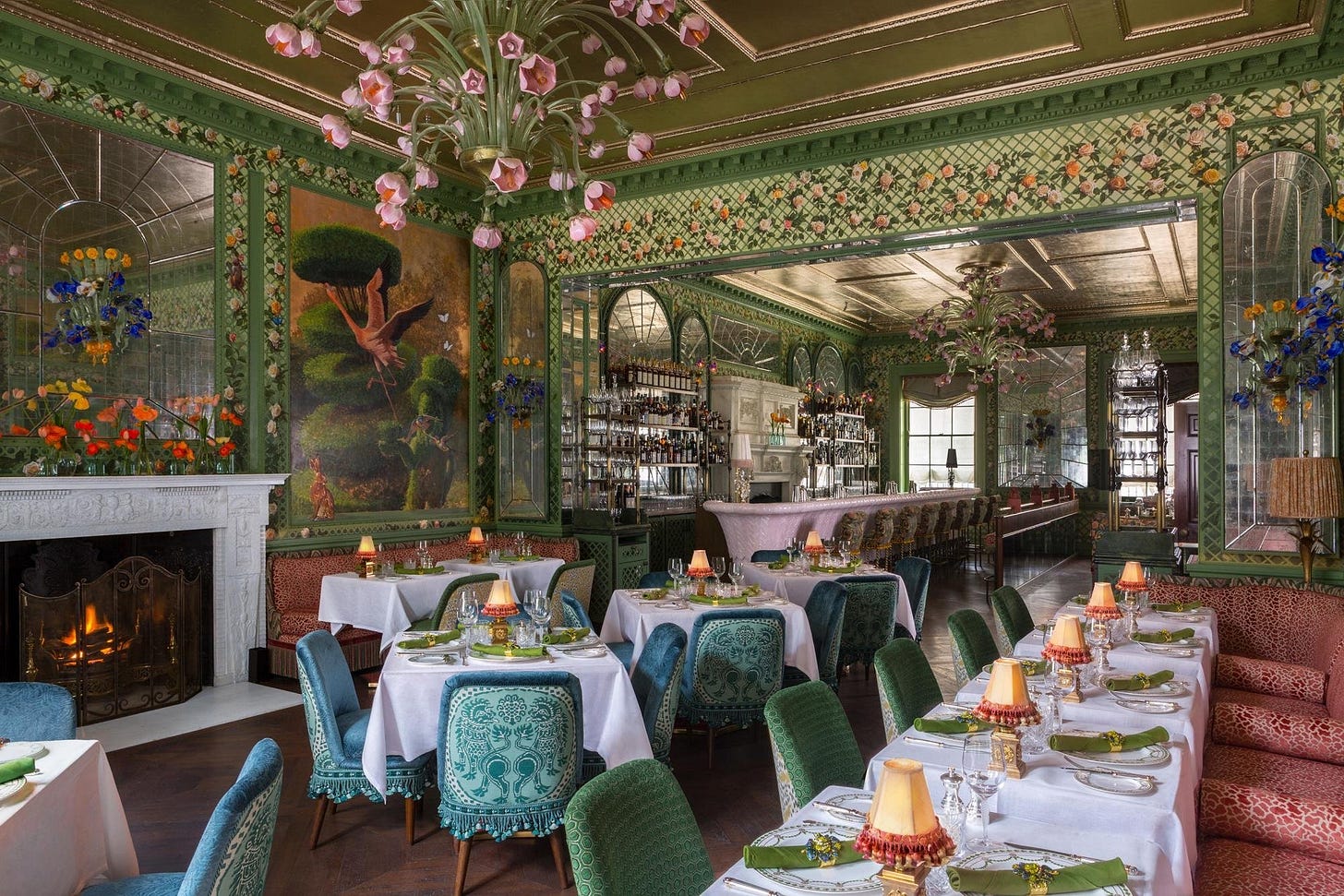


Tomatoes at the end of July and most of August. 🍅 I live for tomato season!